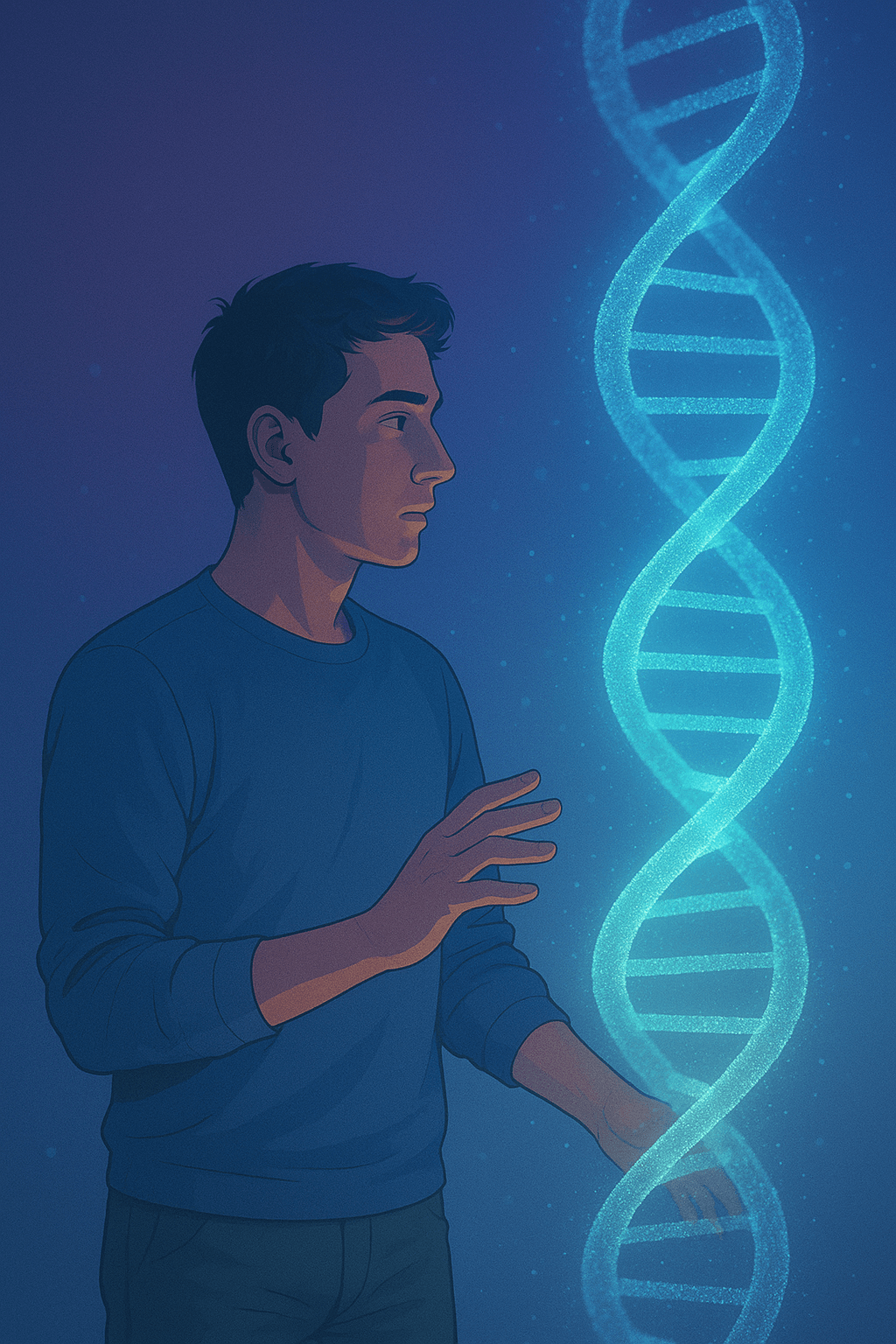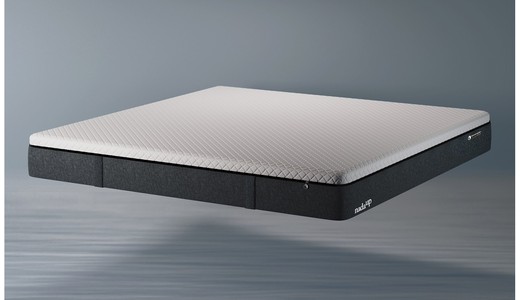Sleeping Into Alignment: How DNA, Thought, and NadaUp Shape You

Every morning you wake up, yawn, stretch, and begin a day that feels “normal.” Yet, beneath your awareness, your cells are performing an ancient dance—a choreography dictated by a language written in four letters: A, T, C, and G. This is your DNA, and far from being a static script, it is an adaptable score waiting for your conscious choices to press "play" on the right melody.
At NadaUp, we believe that sleep is not a passive event—it is the quiet conductor that orchestrates your biology into balance. Our mattress is not just a place to lie down, but a biologically attuned interface to help you engage with the code of life itself.
DNA: The Silent Symphony Within You
DNA (deoxyribonucleic acid) is not simply a biological blueprint—it's a dynamic, responsive language. While its sequence remains mostly fixed from birth, how it expresses itself is continuously influenced by your emotions, thoughts, environment, and most profoundly, your sleep.
Every cell in your body contains the same DNA, yet your brain cells behave differently from your skin cells because only certain genes are “switched on.” This phenomenon is called gene expression, and it's controlled by epigenetic mechanisms—like volume knobs on a mixing board. These can be adjusted depending on your life context (Moore et al., 2013).
Think about a stressful week at work. Your mind races, your digestion slows, your skin breaks out. That’s gene expression in motion. Now, recall a peaceful weekend with deep sleep, sunlight, and joy. Your body regenerates, your mind clears. That’s also gene expression—but from a different conductor.
Consciousness and Epigenetics: You Write the Story
According to Dr. Bruce Lipton, a pioneer in epigenetics, “Genes are blueprints. But the mind is the architect” (Lipton, 2005). In other words, we don’t change the sequence of DNA, but our lifestyle, emotions, and environment determine which genes are read and when.
Here’s a simple daily example: Imagine you walk into your home after a tense commute. If your environment is chaotic, your stress hormone cortisol spikes. But if you instead step onto a NadaUp mattress—ergonomic, cooling, pain-relieving—you trigger a sense of safety. Safety downregulates stress genes and upregulates healing genes (Zannas et al., 2015).
That’s what we mean when we say NadaUp doesn’t replace your biology—it reminds it.
Sleep: The Nightly Programming of Your Genetic Code
Sleep is the unsung hero of gene regulation. It’s when your body performs its highest-order tasks: healing, organizing memories, flushing toxins, and making decisions about how genes behave the next day (Cirelli & Tononi, 2008).
Science shows that up to 60% of genes exhibit circadian rhythms—their expression depends on when and how well you sleep (Möller-Levet et al., 2013). Sleep is not rest. Sleep is software. And like all software, the quality of the interface matters.
NadaUp mattresses, using MHRA-tested Mammoth Medical Grade™ foam, are designed to foster the exact physiological conditions—pressure relief, spinal alignment, thermal balance—required for regenerative sleep. By sleeping on NadaUp, you create the internal and external safety that allows your body to express its healthiest self.
The Living Interface: NadaUp as a Code Conductor
Let’s get personal.
You’re a 37-year-old who struggles with lower back pain and mild insomnia. Every night you toss and turn on a regular foam mattress. You wake up tired and achy, and your mood darkens. Now replace that with a NadaUp ergonomic mattress that adapts to your body, promotes optimal temperature, and reduces pressure by 60%.
After two weeks, you notice:
-
Falling asleep 29% faster
-
Mood improvements from better serotonin regulation
-
More energy from improved melatonin production
-
Less inflammation and better posture
Your DNA didn’t change. But your environment did, and that’s how gene expression works.
Sleep becomes your dialogue with life. And NadaUp is the grammar that makes the dialogue meaningful.
Reverence for the Code: A Philosophy, Not a Product
There’s a quiet arrogance in trying to “optimize” humans through invasive interventions and performance hacking. At NadaUp, we approach life with a different view—one of reverence. The DNA code is not to be hacked. It is to be heard.
NadaUp isn’t here to override your biology. We’re here to harmonize with it. In the same way that a meditation practice doesn't force peace but invites it, our mattress doesn’t “fix” your body—it reminds it how to heal.
Sleep is your sacred ritual.
Your mattress is your altar.
And your DNA is the hymn waiting to be sung.
Books and Wisdom That Support This View
-
The Biology of Belief by Bruce Lipton – Discusses how thoughts and environment shape our biology.
-
The Divine Matrix by Gregg Braden – Explores the energetic field that connects consciousness with matter.
-
Why We Sleep by Matthew Walker – Presents scientific insights into sleep’s role in memory, emotion, and gene repair.
-
The Genie in Your Genes by Dawson Church – Links epigenetics with healing, emotion, and consciousness.
Each of these authors, in their own way, argue that we are not victims of our genes—but curators of them.
You Are the Programmer
You are not a random product of evolution, nor a prisoner of your genetics. You are a conscious being in conversation with the most advanced technology ever created—your own DNA.
And sleep is the nightly reset button.
So make it count. Choose a mattress that speaks the same language as your biology—comfort, balance, and quiet regeneration.
Choose NadaUp: where your genes, thoughts, and dreams meet in harmony.
References:
-
Cirelli, C., & Tononi, G. (2008). Is sleep essential? PLoS Biology, 6(8), e216. https://doi.org/10.1371/journal.pbio.0060216
-
Lipton, B. H. (2005). The Biology of Belief: Unleashing the Power of Consciousness, Matter and Miracles. Hay House.
-
Möller-Levet, C. S., Archer, S. N., Bucca, G., Laing, E. E., Slak, A., Kabiljo, R., ... & Dijk, D. J. (2013). Effects of insufficient sleep on circadian rhythmicity and expression amplitude of the human blood transcriptome. PNAS, 110(12), E1132-E1141. https://doi.org/10.1073/pnas.1217154110
-
Moore, L. D., Le, T., & Fan, G. (2013). DNA methylation and its basic function. Neuropsychopharmacology, 38(1), 23–38. https://doi.org/10.1038/npp.2012.112
-
Zannas, A. S., Provençal, N., & Binder, E. B. (2015). Epigenetics of Posttraumatic Stress Disorder: Current Evidence, Challenges, and Future Directions. Biological Psychiatry, 78(5), 327–335. https://doi.org/10.1016/j.biopsych.2015.04.021









